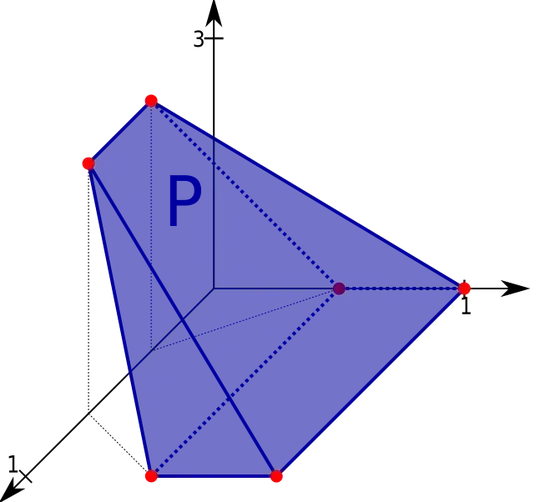This question depends on the belief/assumption that hyperplanes are a special type of algebraic variety. If they are not, please correct me, and the question should end here.
Is the $n-2$ skeleton of a convex polytope closed in the Zariski topology?
This question is to some extent proof verification since I already have putative proof in my mind.
Attempted proof:
Every convex polytope can be written as the intersection of finitely many half-spaces. (See, e.g., here.) In particular, there always exists a unique minimal description using the facet-defining halfspaces (facet = $n-1$ face).
I believe then that each $n-2$ face of the convex polytope will then as a result be the intersection of some subset of the hyperplanes corresponding to the facet-defining halfspaces (the hyperplanes themselves are $n-1$ dimensional).
If each of the hyperplanes is closed in the Zariski topology, then so should be all of their intersections, which include the $n-2$ faces of the convex polytope.
The $n-2$ skeleton is the union of finitely many $n-2$ faces, so if each $n-2$ face is closed in the Zariski topology, then so should be the $n-2$ skeleton.
This question is a follow-up to two of my previous questions:
What is the equation of the orthogonal group (as a variety/manifold)?
Why is the intersection of algebraic subsets of an algebraic variety again an algebraic subset?
